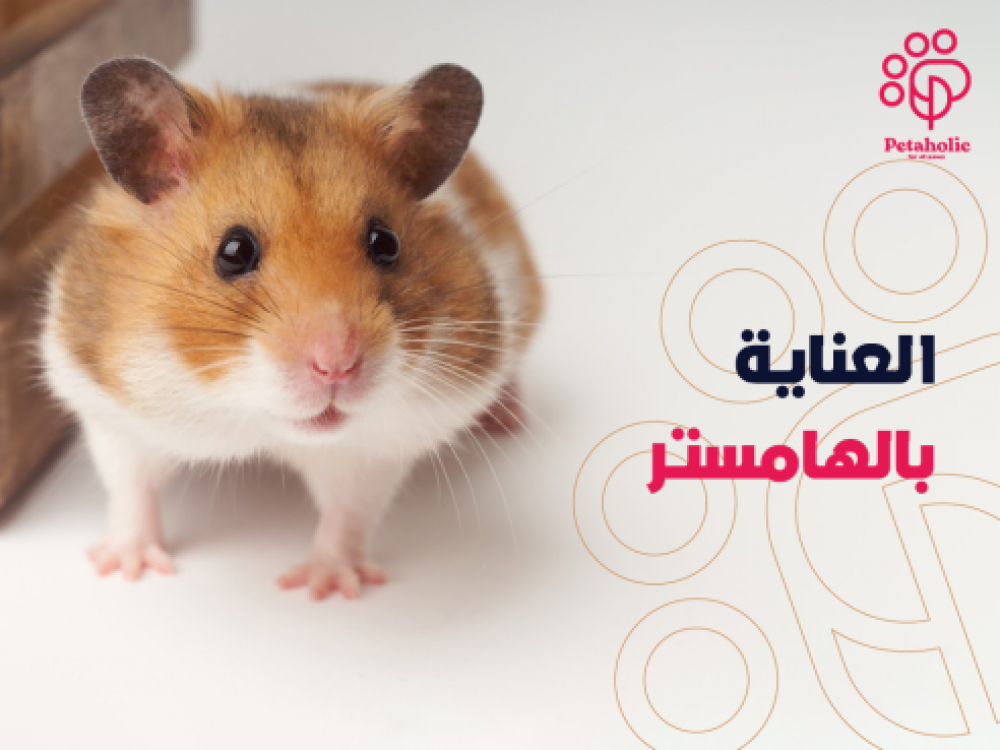
Hamsters are very popular household pets. These small rodents usually live for about two years, and prefer to live alone. There are different breeds of hamster, and they vary in size and characteristics. If you want to adopt a hamster soon, you need to know how to take care of a hamster according to the type of breed, size and all that. At Petaholic, you will know everything you need, and you will also be able to buy all the supplies you need at the best prices.
How to take care of a hamster as it should be
environment and home
Making sure your hamster has a suitable place to live is the first step to keeping your pet healthy and happy. Here's what your hamster needs for a comfortable home:
- A comfortable, dry and clean place to live, in a quiet place where they can get rest without being disturbed.
- Make sure the house is not too dry or damp, as hamsters live in warm, dry climates in the wild.
- The hamster should be kept in a room where the lights go out at about the same time each night. Try to avoid irregular lighting hours. Hamsters are also sensitive to bright sunlight.
- Hamsters should be placed away from household items that can generate ultrasound, such as televisions, computer monitors, vacuum cleaners, or sources of running water. This is because hamsters are very sensitive to high frequency sounds that we cannot hear, and they can find this very stressful.
- Do not give hamsters nesting material that breaks into fine strands, such as cotton wool or similar products, as they can get serious injuries if they get tangled around their limbs or swallow it.
- Proper Cage: Wild hamsters live in deep burrows and build nests naturally. Therefore, pet hamsters prefer to live in a cage with a solid floor covered with suitable nesting material. You should also make sure that the cage is cleaned regularly and that there is dry bedding and nesting material.
The best type of food for hamster care
In the wild, hamsters eat a mixture of seeds, grains, insect larvae, and large insects. As pets, hamsters need a good, well-balanced and varied diet that contains all the essential nutrients and minerals they need. So they can get all of this from:
- A mixture of different seeds specially formulated to meet their needs.
- Small amounts of cleaned root vegetables and cut fruits such as apples.
Just make sure you don't give your hamster grapes, as it can be toxic to rodents. You can put food on dishes inside the cage or directly on the floor of the cage. You can also give your hamster wet or powdered food only if your vet advises you to do so, for example because of dental problems. Wet food can often be difficult to clean out of the cage, and is prone to bacteria and mold growth, which can harm your hamster. So if your hamster is sick and needs wet food, it is important to remove all traces of it at least twice a day to ensure that the food does not start to rot.
Hamsters also need a constant supply of fresh, clean drinking water, preferably from a bottle with a clear spout. Change the water regularly, clean the bottle and nozzle properly, and check the water bottle every day for leaks or blockages.
Among the special foods that we provide for hamsters in Petaholic:
Information about hamsters you need to know
In order to take care of your hamster the best you can, you need to know some basic information about the little companion you'll be bringing into your home.
- There are 24 species of hamsters and they belong to the Rodentidae family.
- Hamsters usually live up to two years, although some live longer.
- Hamsters enjoy exploring and use their whiskers to help them feel things in their environment.
- Hamster teeth never stop growing, and they have a self-sharpening system, in which the incisors grind against each other as they bite, which wears down and sharpens the teeth.
- Hamsters are nocturnal, with large, retinal eyes that work best in low light and darkness.
- Not all hamsters are social, and in the wild they generally live alone in their burrows. However, there are some species that live naturally in groups.
Among the many products we stock for your little pet at Petaholic, we recommend:
Types of hamsters suitable for home breeding
There are three main types of hamsters that are offered for sale in pet stores because they are better for keeping as pets than other breeds. However, different types of hamsters should never be kept together, as hamsters are usually raised individually. Because males and females tend to be aggressive towards each other. Here are the main types that you can choose from to raise at home:
- Syrian or golden hamsters: It is the most widespread and common type of hamster as pets in homes because it is the easiest to deal with humans and control its behavior. This species is bred in sealed cages individually because it is very aggressive with other types of hamsters.
- Desert hamsters: Also known as dwarf hamsters, they are very social with humans and other hamsters of the same breed, but they should be raised together from an early age. This type of hamster is very fast, agile, and very active.
- Chinese hamster: It is about the same size as the desert hamster. This species can coexist with the same type of hamster sometimes, or they refuse to be handled altogether; It depends on the personality of your hamster. It is also very friendly with humans and is very fast and agile.
Among the featured products we recommend for your hamster are:
All you need to know about hamster mating
Male hamsters can become ready for mating at the age of 14 weeks, while females are ready for mating when they reach 10 weeks of age. When the female is ready to mate, you will be able to see a thin, stringy, cobweb-like mucus from her vulva. If you want to help your male and female mate, you should place the female in the male's cage about an hour before dark. But then you have to watch them carefully in order to notice their activity and see if they are going to mate or fight.
Female hamsters can be very aggressive towards males in this situation, and can harm them. Therefore, the male must be taken out at once if there is any fighting. Since, as mentioned before, fighting is very likely, aggressive males are best when mating; So that they are better able to defend themselves and hold on to their land. If mating is completed, the male must be removed from the cage.
For the comfort, happiness and well-being of your hamster, we recommend from Petaholic:
Since hamsters are very sensitive creatures, they need extreme care and attention. At Petaholic, we've made this task easy for you by providing the best and quality pet supplies you need at the lowest prices.
We also have:

